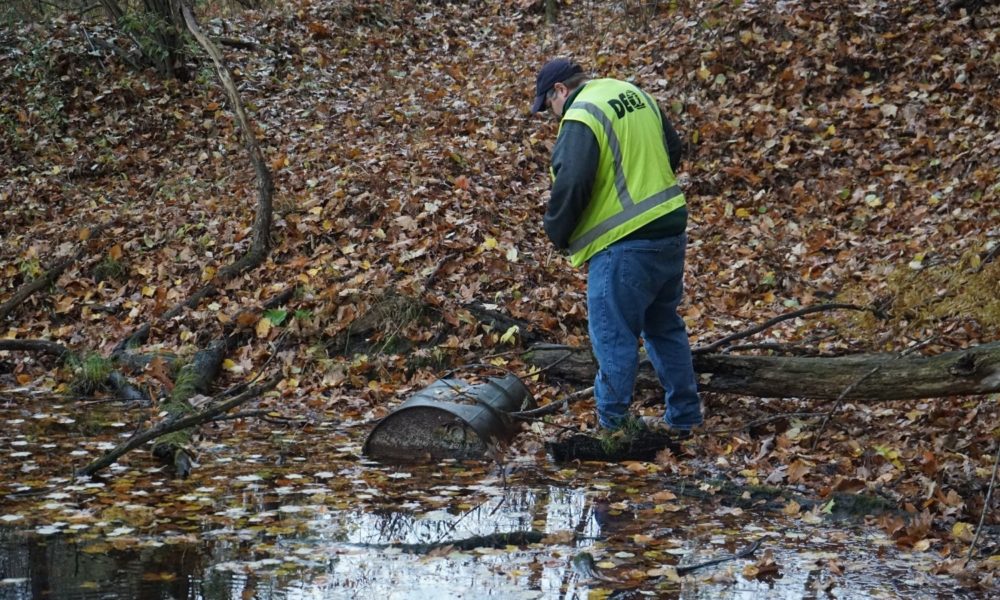Yesterday, EPA Administrator Michael Regan announced a “strategic roadmap” for regulating PFAS (per- and polyfluoroalkyl substances), a class of chemicals with known health impacts. The roadmap is an important set of commitments by the current administration that shows how it will implement actionable and enforceable measures to regulate PFAS. Especially encouraging are the administration’s commitment to:
- “Aggressive timelines” for setting enforceable drinking water limits on two individual PFAS chemicals (PFOA and PFOS)
- Designating PFOA and PFOS as hazardous substances under the Comprehensive and Environmental Response, Compensation, and Liability Act
- Further limiting industrial releases of PFAS into the air and water
- Increasing monitoring and research
- Reviewing past actions on PFAS taken under the Toxic Substances Control Act to address those that are insufficiently protective (recent investigations have shown EPA managers actively sidelined the science in this office, including in PFAS work)
- Closing loopholes in how manufacturers are required to report PFAS releases
These all represent a good start, and Administrator Regan has rightly called it a “bold strategy that starts with immediate action.” The open question, however, is whether the EPA’s roadmap is strong enough to safeguard the health of communities across the nation from current PFAS contamination–particularly underserved communities. For instance, the roadmap neglects to mention actions concerning PFAS contamination that disproportionately occurs in underserved communities, such as the incineration of PFAS wastes and the application of PFAS-contaminated sludge in farm fields.
PFAS contamination is widespread and has been linked to a wide variety of health problems, such as an increased risk of cancer, disruptions to normal cognitive development in children, and a weakened immune system (including a decreased response to vaccinations). We previously carried out analyses on PFAS in groundwater and found widespread and alarming levels of contamination at military facilities and in communities of color and low-income communities. Many of these cases require urgent action, including holding polluters accountable.
Designating certain PFAS as hazardous substances
In January, my colleague Genna Reed laid out a plan for how the Biden administration should act on PFAS to ensure that scientific, community-focused, and enforceable processes are at the forefront of their federal actions. The very first item on her list was to designate the whole class of PFAS chemicals as a hazardous substance to avoid a scenario in which some PFAS-contaminated sites are not cleaned up because they only contain certain PFAS but not others (there are thousands of PFAS chemicals, with new ones being continuously created by industry).
The EPA’s strategic roadmap has promised to designate two of the best-studied PFAS chemicals, PFOA and PFOS, as hazardous substances and will consider adding additional PFAS, or groups of PFAS, at a later date. This is both a step in the right direction and one that could prove problematic if the EPA does not adequately follow through. Still, listing PFOA and PFOS as hazardous substances under the Comprehensive and Environmental Response, Compensation, and Liability Act should relieve some of the enormous health and financial inequities currently borne by impacted communities. Currently, communities near sites with high levels of PFAS contamination are required to pay for their own water and testing filtration, with no mechanism to pass these costs on to the responsible parties that caused the PFAS pollution in the first place.
Listing PFOA and PFOS as hazardous substances will help alleviate this inequity, allowing the EPA to prioritize and remediate PFAS-contaminated Superfund sites, and to identify any parties responsible for the pollution, holding them accountable for cleanup. We will continue to monitor how the EPA follows up to make sure marginalized communities do not face undue delays in the cleanup of these polluted sites.
Creating more opportunities community engagement
I had the opportunity to attend one of the EPA’s Board of Scientific Counselors (BOSC) meetings earlier this month, which focused on the agency’s research plan for addressing PFAS contamination. One of the most interesting moments for me was hearing the advisory scientists pressing the EPA staff for details about how they planned to engage with impacted communities. How would the EPA carry out community outreach? How would the communities’ input be incorporated into the EPA’s programmatic work? Who is in charge of this important work? What are the EPA’s successes and failures with engaging with communities on PFAS, and how are they committing to better engagement?
As I review the EPA’s roadmap, these are the questions that linger for me. Plus, this wasn’t the first time that an EPA advisory board had pressed the EPA on this issue. In 2019, the EPA’s National Environmental Justice Advisory Council (NEJAC) previously raised a similar point in a letter addressed to the EPA about PFAS. The committee’s very first recommendation read: “Meet with frontline communities in each EPA region to understand the PFAS health impacts and concerns beyond regulatory issues.”
The EPA’s roadmap does provide some information on how the agency plans to engage with communities that face major PFAS contamination. But the section is short (one paragraph) and lacks specifics. The EPA should meet with, interact, and engage with community members more and provide community members with greater access to agency staff to help ensure that the voices of communities are heard and incorporated. The outreach process to communities should include providing information about health threats and cleanup options, soliciting public comments, and creating a set of best practices for ensuring that community perspectives are thoroughly presented and considered.
This is a positive step, but more needs to be done
The EPA’s strategic roadmap is a step in the right direction and demonstrates the agency’s commitment to regulate PFAS. However, more needs to be done. Congress, other federal agencies, and EPA all need to make sure our nation’s efforts to address the PFAS public health crisis do not end with this roadmap. Congress needs to ensure EPA and other agencies have the resources they need to carry out their efforts to address PFAS, while also prioritizing the PFAS Action Act to require that PFAS control efforts are guided by enforceable measures using the best available science. We will continue to press the Biden administration and Congress to listen to the science and prioritize efforts to address the widespread and dangerous amounts of PFAS contamination across the nation, especially in underserved communities.

